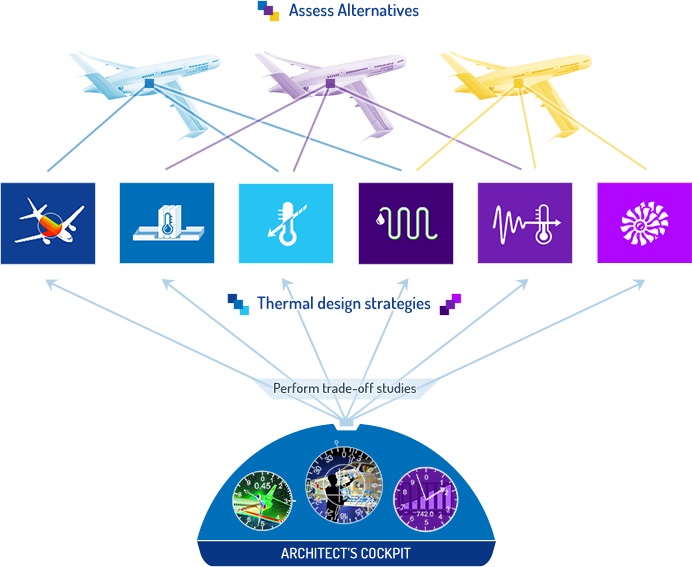Sharing knowledge for next generation thermal aircraft design

Related topics
Innovation Transport Smart, green and integrated transport Belgium France Germany Italy Netherlands Sweden United Kingdom Canadadate: 04/04/2016
Project: Thermal Overall Integrated Conception of...
acronym: TOICA
See also: CORDIS
The TOICA project has created a collaborative virtual workspace where teams can jointly examine the prospective thermal behaviour of planes. “Our aim is to deliver means and develop capabilities to support people designing aircraft, especially at the beginning of this process, where the work is mainly conceptual,” says project coordinator Pierre Arbez of Airbus Operations in Toulouse, France.
“This is completely new,” he adds, “no such system exists at the moment.” It could save aircraft manufacturers time and money, potentially shortening the lead time for the commercialisation of new planes by several months. It would also help to reduce the risk of problems later on in the development of the craft, where troubleshooting comes at a much higher cost.
“If we detect risks once we are producing or testing the craft, we have to find ways to mitigate those risks,” says Arbez. However, at this stage, any solution is likely to involve adding material, such as shielding or cooling systems, he notes. Such changes would automatically increase the weight, potentially affecting the performance of the plane, raising its operating costs, or impinging on space that was reserved for other uses.
The system developed by TOICA could help aircraft architects to pre-empt such problems. It would, Arbez notes, also give them far more freedom to explore promising options, as they would be able to run simulations to test and validate their choices.
Picture a plane
The TOICA environment was built with three main user groups in mind, Arbez explains. More specifically, these are the architects themselves, the experts developing the systems of the proposed plane or assessing its design, and the various companies manufacturing parts that are not produced by the commissioning aircraft manufacturer.
It enables these contributors to share crucial information, such as details of the requirements and constraints, or of the characteristics of individual components. It also allows users to view representations of the thermal architecture of the future plane. They can exchange models, assess the evolving design, and jointly consider any trade-offs that may be necessary to optimise the craft in terms of performance, cost and operability.
Destination integration
To build the system, TOICA combined software tools that already existed for some of the required functionalities and developed additional capabilities. The team interacted with the editors of these programmes — all of whom are members of the project consortium — to enhance the features and interoperability of their products. The complete, integrated system was tested at several workshops, where architects were able to use it in the development of innovative thermal architectures.
The system keeps data coherent and traceable, Arbez notes. This feature, he explains, helps to consolidate the input from the various sources as the process unfolds and ensure that all contributors have access to the latest version of the aircraft architecture as the final design takes shape.
To align the system with emerging possibilities and trends in aviation, TOICA conducted case studies on a number of hot topics. These included aspects as varied as innovative cooling technologies, increasingly large engines, and thermal management techniques to reduce fuel consumption.
TOICA is due to end in August 2016, having delivered a blueprint for an integrated system and improved many of the components on which it relies. More work is needed to develop the system into a finished product, Arbez notes, and manufacturers would then have to consider how best to implement it in view of their specific processes and constraints.
However, this is the way forward for the thermal design of planes, Arbez remarks. “Many companies are striving to make this kind of environment available to their architects,” he concludes. Systems inspired by TOICA could therefore be in use fairly soon.
